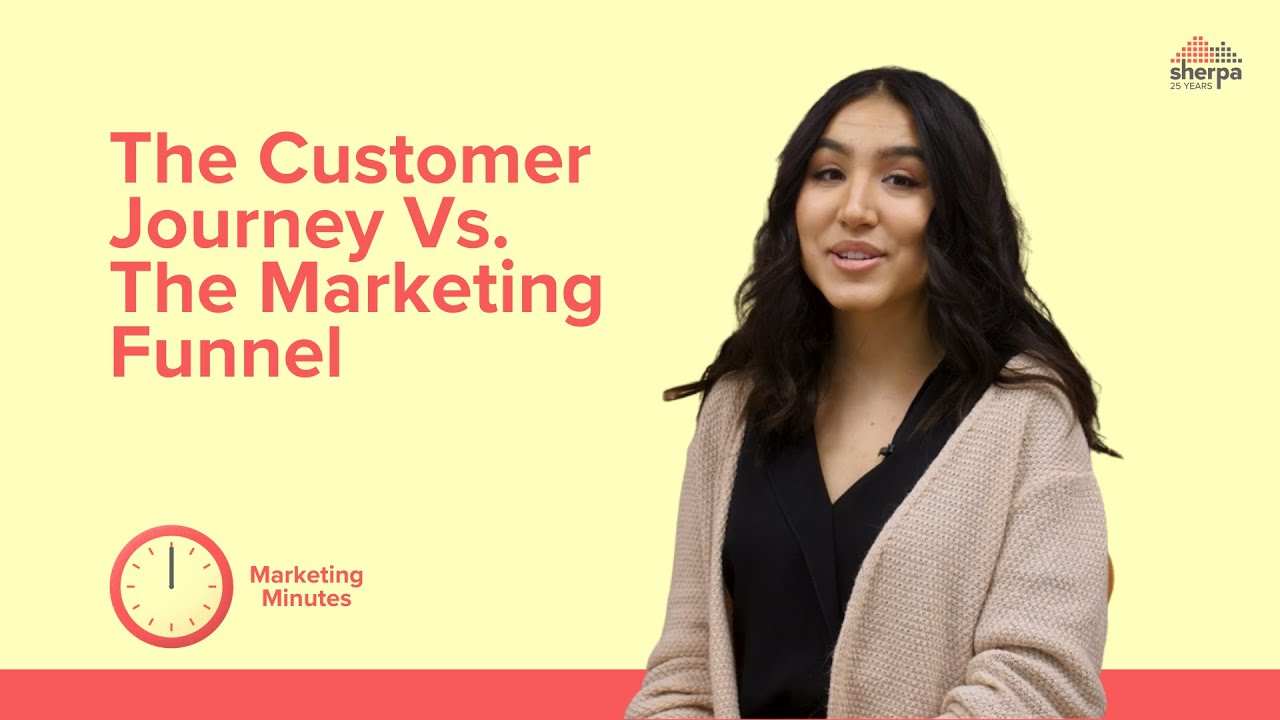Trajetória do Cliente
Summary
TLDRThis script discusses the stages of the customer journey, emphasizing the importance of understanding the sales funnel, which includes top, middle, and bottom phases. It highlights best practices for each phase, focusing on the need for specific, high-quality content and clear pricing in the bottom of the funnel to drive conversions. The script also contrasts B2B and B2C sales, noting that B2B sales are slower, involve committees, and are influenced by factors like fear of making wrong purchases, while B2C sales are often driven by impulse and emotions, like excitement and desire.
Takeaways
- 😀 The customer journey is not linear, but can be structured using the sales funnel to better organize marketing and sales efforts.
- 😀 The sales funnel consists of three main stages: top of funnel (ToFu), middle of funnel (MoFu), and bottom of funnel (BoFu).
- 😀 In the ToFu stage, the goal is to create awareness and engage potential leads with valuable content.
- 😀 The MoFu stage focuses on providing more specific content to help leads in their decision-making process.
- 😀 The BoFu stage is crucial for closing sales, where clear product/service details, including pricing, should be shared (unless highly customized).
- 😀 Building relationships is key in the BoFu stage; focusing only on closing sales can harm the overall sales process.
- 😀 In inbound marketing, the customer journey consists of four stages: attraction, conversion, relationship, and closing.
- 😀 The attraction stage involves creating interest through ads or content, triggering leads to reach out.
- 😀 The conversion stage happens when leads provide personal information and engage with the brand (via a landing page, chat, etc.).
- 😀 In the relationship stage, effective communication and addressing the lead's needs will move them closer to the sale.
- 😀 B2C sales are typically quicker and more impulsive, while B2B sales require longer decision-making processes, often influenced by practical considerations and committee decisions.
Q & A
What is the main focus when working with the sales funnel?
-The main focus when working with the sales funnel is to guide the customer through the different stages of interest, engagement, and decision-making, with a strong emphasis on the bottom of the funnel where the sale is made.
Why is it important to avoid focusing solely on the sale in the bottom of the funnel?
-Focusing solely on the sale without establishing a solid relationship and connection with the customer can significantly hinder the chances of successfully closing the deal. Building trust and rapport is crucial to converting leads into sales.
What are the three main stages of the marketing and sales funnel?
-The three main stages of the funnel are the top of the funnel (awareness), middle of the funnel (consideration), and bottom of the funnel (decision), each with its own strategies and objectives.
How should you approach the bottom of the funnel for high-quality sales?
-In the bottom of the funnel, you should provide specific information about the product or service, including the price, and offer high-quality content such as webinars and demos to influence the purchase decision.
What should be avoided when working in the bottom of the funnel?
-You should avoid solely focusing on the sale. Instead, focus on building a connection and relationship with the potential customer, as this will help in achieving a higher conversion rate.
What are the four main steps in the inbound sales process?
-The four main steps in the inbound sales process are attraction (where the lead shows interest), conversion (where the lead shares contact information), relationship building (where you understand and address the lead's needs), and closing the sale.
Why is asking about the lead's trigger event important in the inbound process?
-Asking about the lead's trigger event helps you understand their specific needs and motivations, which is crucial for tailoring the sales approach and maintaining engagement throughout the process.
How does the B2B sales process differ from B2C sales?
-B2B sales often involve more complex decision-making processes, with committees and multiple factors affecting the purchase, while B2C sales tend to be faster and more impulsive, with individual customers making quicker decisions based on emotions and desires.
What role do emotions play in B2B sales?
-Although B2B sales are less impulsive than B2C sales, emotions still play a role. The fear of making a wrong decision, especially with large investments, is a key emotional driver in B2B sales decisions.
Why is it important to present the price in the bottom of the funnel?
-Presenting the price early on in the bottom of the funnel helps to avoid confusion and builds transparency, which is important for maintaining trust and guiding the customer toward a final decision.
Outlines

此内容仅限付费用户访问。 请升级后访问。
立即升级Mindmap

此内容仅限付费用户访问。 请升级后访问。
立即升级Keywords

此内容仅限付费用户访问。 请升级后访问。
立即升级Highlights

此内容仅限付费用户访问。 请升级后访问。
立即升级Transcripts

此内容仅限付费用户访问。 请升级后访问。
立即升级浏览更多相关视频

Kunci Naikin Sales Berkali-kali Lipat Lewat Funnel Digital Marketing | #TheMarketingPlaybook EP 05

How to Create Content Pillars to Sell Digital Products

Customer Journey vs Marketing Funnel | Marketing Minutes

KPIs for Digital Marketing | How to Evaluate Your Marketing Performance

Sales Funnel

Sales Funnels for Beginners: How To Build A Sales Funnel & Increase Profits
5.0 / 5 (0 votes)
